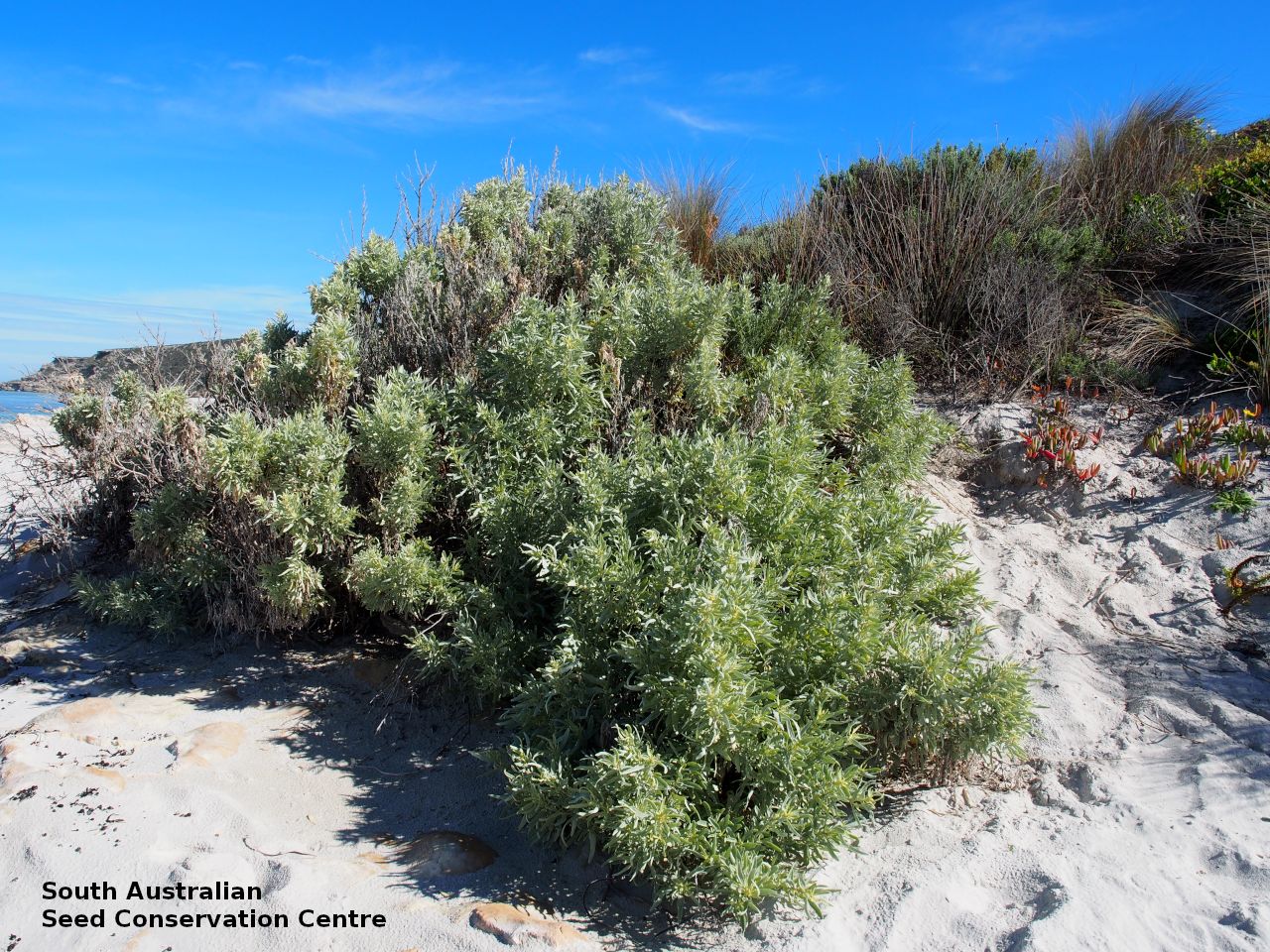














Botanical art
Prior names
Atriplex cinerea ssp. globulosa
Common names
Grey Saltbush
Coast Saltbush
Etymology
Atriplex from the Latin 'atriplexum' meaning an orache, a saltbush, an Ancient Latin name for this plant. Cinerea from the Latin 'cinereum' meaning ashy-grey, alluding to the grey appearance of the plant.
Distribution and status
Found along the coast in South Australia from the Nullarbor to the lower South-east, growing on coastal sands, particularly along shores of sheltered bays and inlets. Also found in Western Australia, New South Wales, Victoria and Tasmania. Native. Common in South Australia. Common in the other states.
Herbarium regions: Nullarbor, Eyre Peninsula, Northern Lofty, Yorke Peninsula, Southern Lofty, Kangaroo Island, South Eastern, Green Adelaide
NRM regions: Adelaide and Mount Lofty Ranges, Alinytjara Wilurara, Eyre Peninsula, Kangaroo Island, Northern and Yorke, South East
AVH map: SA distribution map (external link)
Plant description
Dioecious or monoecious, erect or spreading shrub to 1.8 m high. Leaves ovate to narrowly elliptic, narrowly elliptic to oblong to 80 mm long and 25 mm wide; margins entire, rarely coarsely toothed; surfaces uniformly silvery or grey-green. Male flowers in dense globose clusters along a spike. Female flowers clustered in upper axils. Flowering between June and December. Fruits are greyish ovoid to rhombic fruit, broadly tapered at base, entire or obscurely 1 or 2-toothed above midway to 10 mm long and wide; dorsal appendages absent. Seed embryo type is peripheral.
Seed collection and propagation
Collect seeds between October and March. Collect fruits that are starting to dry or and turn brown. Fruits can be collected directly from the bush or from the ground underneath Place the fruits in a tray and leave to dry for one to two weeks. No cleaning is required if only the fruits are collected. The seed can be stored in the fruit or can be cleaned further. Rub the fruit gently by hand to dislodge the seeds. Use a sieve to separate the unwanted material. Store the seeds with a desiccant such as dried silica beads or dry rice, in an air tight container in a cool and dry place.